MORE COVERAGE
Twitter Coverage
Satyaagrah
Written on
Satyaagrah
Written on
Satyaagrah
Written on
Satyaagrah
Written on
Satyaagrah
Written on
JOIN SATYAAGRAH SOCIAL MEDIA
Jauhar of Rani Padmini and the enduring Muslims legacy of enacting necrophilia act of gang raping dead bodies
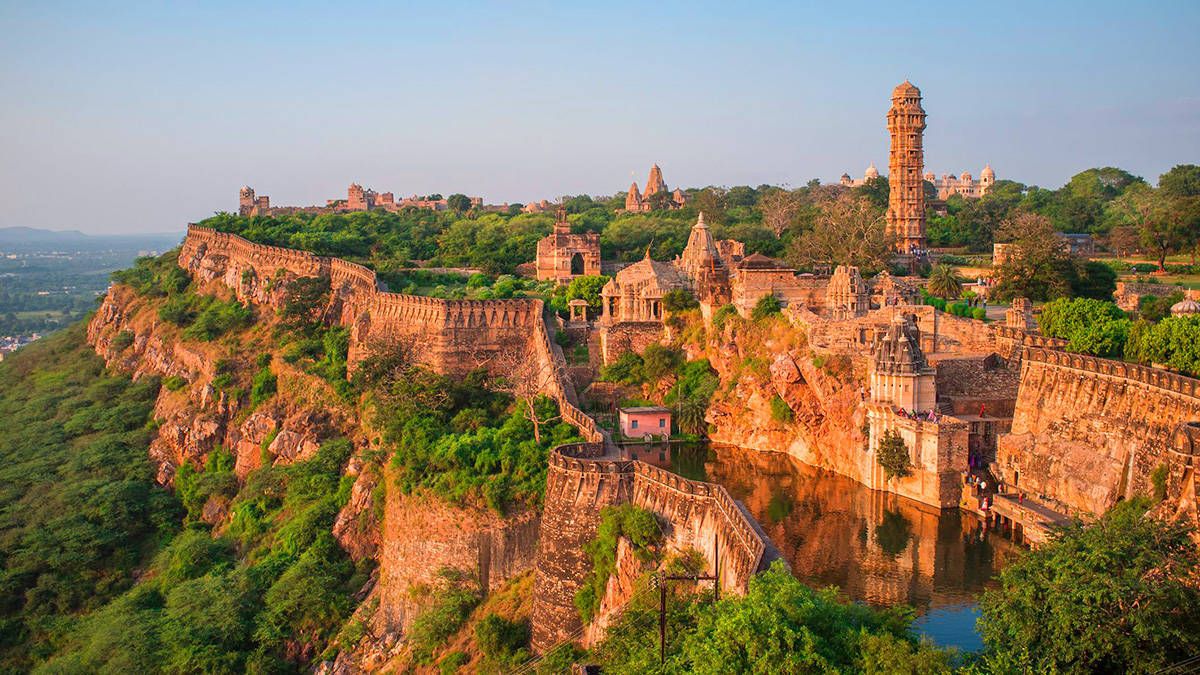
The history of Chittor is one of the most stirring chapters in Indian history for it was there that the flower of Rajput chivalry sprang to life and the immense stretch of its sacred walls and ruined palaces relate the saga of innumerable sieges and heroism which has almost become a myth now.
Chittorgarh was one of the most fiercely contested seats of power in India. With its formidable fortifications, Bappa Rawal, the legendary founder of the Sisodia dynasty, received Chittor in the middle of the eighth century, as part of the last Solanki princess's dowry. It crowns a seven-mile- long hill, covering 700 acres (280 hectares), with its fortifications, temples, towers and palaces.
From the eighth to the 16th century, Bappa Rawal's descendants ruled over an important kingdom called Mewar stretching from Gujarat to Ajmer. But during these eight centuries the seemingly impregnable Chittor was surrounded, overrun, and sacked three times.
26 August 2021 marked the 718th anniversary of the fall of Chittorgarh to Muslim marauder Alauddin Khilji of the Khilji Dynasty. After eights months of siege starting January 1303, Khilji attacked and captured the Chittorgarh fort on 26 August 1303 in a historic and brutal battle that resulted in the legendary Rani Padmini and other women inside the fort to commit Jauhar, in order to protect their honour and avoid the horrifying fate of being raped and captured by the invading army.
 Alauddin Khilji |
Alauddin Khilji usurped the control of the Delhi Sultanate after killing his uncle Jalaluddin Khilji. Soon after assuming the throne of Delhi, Khilji decided to expand his uncle’s regime. Khilji’s reign was then routinely threatened by Mongol invasions from the North West. After brutally suppressing the Mongol attempts at conquering the Delhi Sultanate, Khilji turned his attention towards bringing the rest of India under Muslim rule.
His campaign for expansion started with the attack on Gujarat in 1299 CE and later the subjugation of Ranthambore in Rajasthan in 1301 CE. After these invasions, his focus was shifted towards Chittorgarh in Mewar, Rajasthan. Legend has it that there were two possible reasons why Khilji wanted to bring Chittorgarh under his imperial rule.
According to several accounts, Khilji was reportedly enraged with Raja Ratan Singh, the ruler of Chittorgarh, for not letting his armies through Mewar on their march to Gujarat. Khilji allegedly took it as a personal affront and insubordination to the Delhi Sultanate, following which he decided to attack Chittorgarh.
But popular lore says Khilji was so intrigued and fascinated by the tales and description of the ethereal beauty of Rani Padmini that he attacked the fort of Chittorgarh for the sole objective of capturing the Queen, whom he desired of enlisting in his harem. Islamic invaders at that time were known for capturing Hindu women for their harems and selling them as sex slaves.
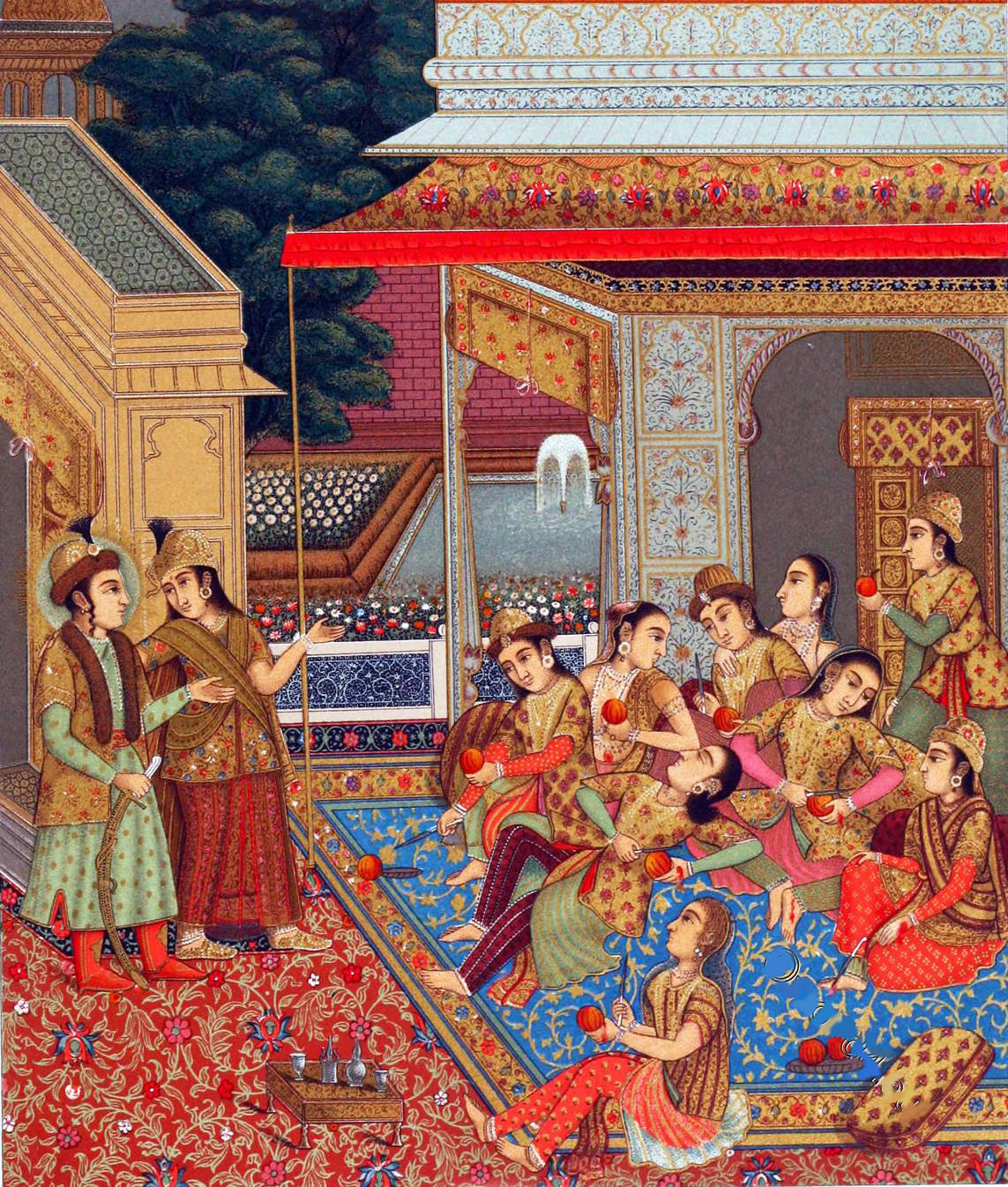 Inner courtyard of an Indian harem of the Mughal period |
The siege to the fort of Chittor and the subsequent attack
In the fourteenth century, Mewar was one of the most powerful kingdoms of northwest India. After having heard the rumours of Rani Padmini’s peerless beauty, Alauddin Khilji was spoiling for witnessing her magnificence in person. So he laid a siege to Chittorgarh fort demanding that he be allowed to see Rani Padmini or else he would invade the fort. It was a grave insult considering that Padmini was the Queen of Chittor and was already married to Raja Ratan Singh. However, intoxicated by his desire to have a glimpse of Rani Padmini, Khilji did not budge from his demand.
Khilji’s army was disproportionately large as compared to the contingent or army maintained by Chittor. When Queen Padmini came to know about the condition laid down by Khilji, she agreed to have Khilji see her ward off an avoidable war. The Delhi Sultanate emperor was allowed to see a reflection of Queen Padmini in a mirror. Khilji was so mesmerised by Rani Padmini’s reflection in the mirror that his resolve to secure her for his harem only grew stronger.
On his way back, Khilji got Raja Ratan Singh to accompany him to Delhi and took the opportunity to deviously kidnap him. He then sent out a word to Chittor that their king would be released in exchange for Rani Padmini. But Singh’s generals, Gora and Badal, threw a spanner in the works for Khilji’s plan to secure Rani Padmini. They agreed to Khilji’s demand and sent him a word that Rani Padmini would be sent to him the following morning.
At the dawn of the next day, 150 palanquins left Ratan Singh’s fort for Alauddin Khilji’s camp. Ratan Singh was angry thinking Padmini had agreed to relinquish her honour to secure his release. But he was in for a surprise as armed guards came out of the palanquins, causing pandemonium in Khilji’s camp and freeing their king from his captivity.
Khilji was infuriated upon finding Ratan Singh had escaped, realising that he had lost his only leverage to get possession of Rani Padmini. He initially decided to storm the fort of Chittor, but later discerned that it could exact a devastating toll on his army. So he decided to stay put and wear out the Rajput forces by laying a siege and choking out the supplies to the fort.
A few days after the siege was laid, Raja Ratan Singh announced that Rajputs won’t go down without a fight. The siege continued for around eight months, after which Khilji and his much larger army attacked the fort. But the numerical superiority of Alauddin Khilji’s army meant the Rajputs had long odds to repel the impending attack.
Rani Padmini and other women commit jauhar to escape a horrifying fate under Khilji and his marauding army
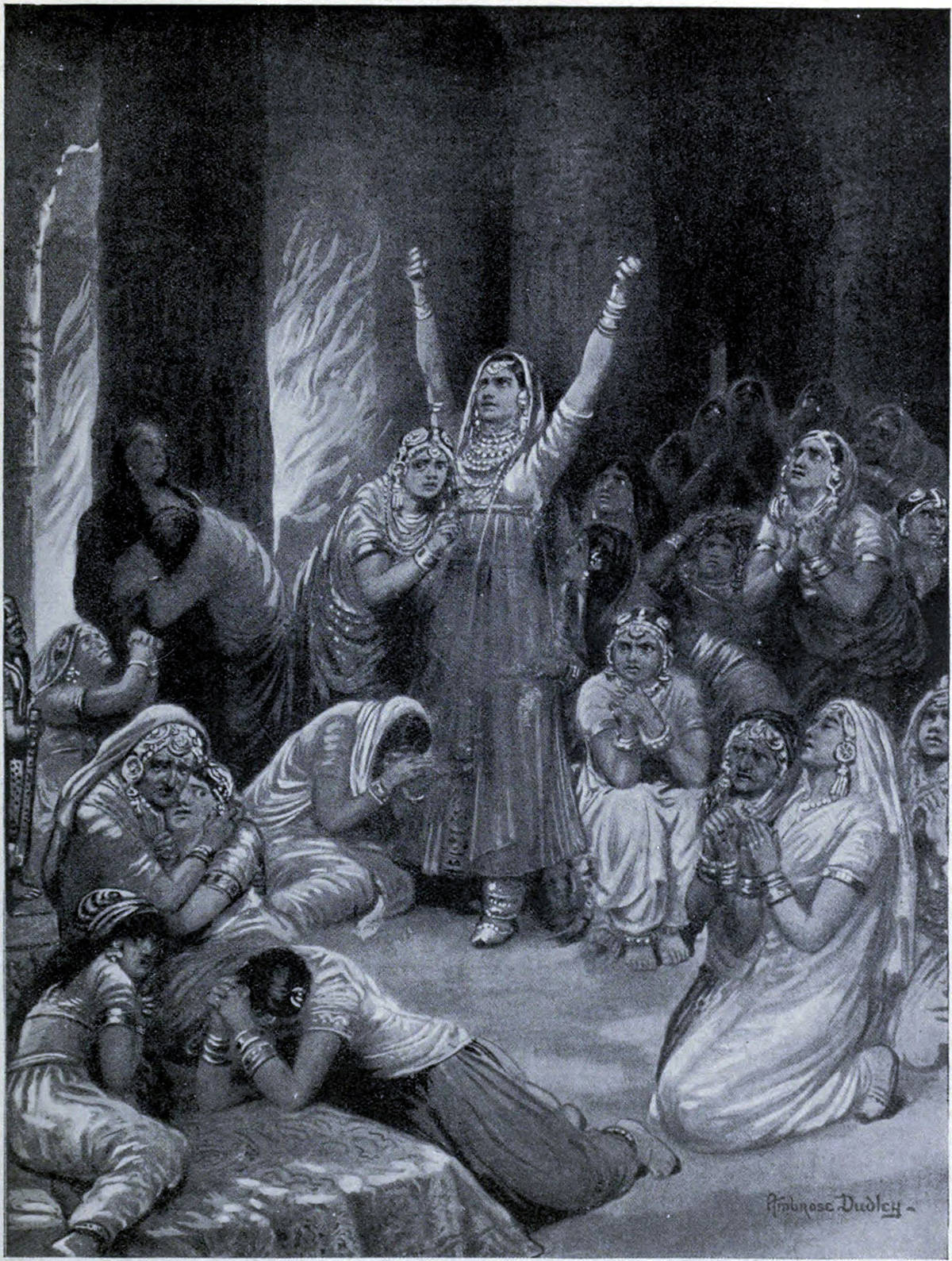 The Rajput ceremony of Jauhar |
Realising their predicament and knowing that it was impossible to emerge victorious in the battle, Queen Padmini and the rest of the women committed Jauhar, a form of suicide. A large pyre was lit inside the fort in which Queen Padmini jumped first, followed by the rest of the women, lest they get captured alive and face the near-certain fate of being defiled and dishonoured by Alauddin Khilji and his men.
Now, many liberal Hindus and otherwise smart and modern people ask this repeatetive question if why Jauhar was the only choice being already known as one of the most painful death. Answer lies in the following description:
Muslims invaders use to follow legacy of enacting necrophilia act of gang raping dead bodies
Mohammed is considered as the most perfect man by muslims. He is given supreme authority in their gangster cult islam. Replication of his inhumane crimes is known as sunnat. Mohammedans replicate all disgusting acts of mohammed to please allah.
Mughal terrorists who invaded Bharat replicated all acts of terrorism, following mohammed. They serial raped many Hindu girls and daughters whenever they raided unarmed common people. They raped even dead bodies of beautiful girls to enact sunnat of mohammed’s necrophilia. Left with no choice when suddenly attacked by terrorist muslims, Hindu women saved dignity of their dead bodies by doing Jauhar. Ashes of brave Hindu women were of no use for muslim creatures.
Hindu women embraced sadgati by loudly chanting “Jai Bhavani” and “Har Har Mahadev” and jumping in a huge well of fire.
It is this disgusting acts of muslims and their craze for necrophilia that gave rise to Jauhar as a common practice to save modesty of a Hindu woman, a child, and babies.
Ignorants denigrate this brave act as a mass-suicide, not knowing the fact that they did this mass self-immolation to avoid conversion to islam and hellish sex slave life, which is core to the satanic principles of quran for non-muslim women.
With all their women dead, the men had nothing to look forward to. They performed the ritual of saka, which entails putting ash from the pyre on their foreheads, wearing saffron, and fighting until death. They fought the advancing army of Khilji with abandon and perished in their wake. Later, after his victory, when Khilji entered the fort, he was horrified to find that all the women he had sought to claim as “war exploits” had been reduced to ashes and bones.
Rani Padmini and other women alongside her etched their names in history for their stunning display of bravery to embrace death instead of allowing their honour and dignity to be trampled upon by Alauddin Khilji and his predatory men. They were acutely aware of what their predicament would be serving as sex slaves of the Islamic attackers, which is what prompted them to embrace death over the prospect of leading a wretchedly dishonourable life, with their existence reduced to being objects of sexual lust for the barbaric invaders.
The incident of Jauhar committed by Rani Padmini and others brings under the spotlight the place of women in an Islamic society. Women have long been considered as second class citizens, especially by those who adhered to the puritanical version of Islam.
The medieval Islamist tradition of brutalising women and treating them as objects of sexual desire
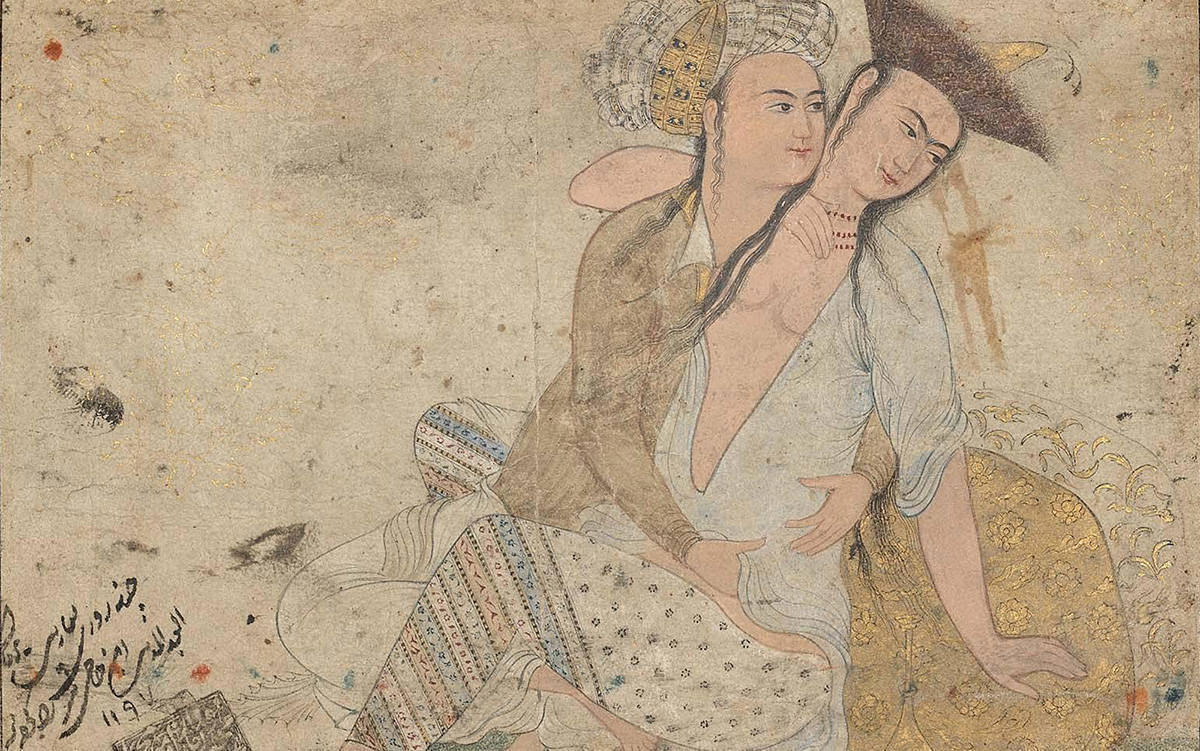 |
The Islamic invaders in India were in some or the other way related or inspired by the Islamic Caliphates that germinated following the death of Prophet Muhammad. These Caliphates, be it Abbasid, Umayyad, or others, were stringent and uncompromising in their interpretation of Islam. It also included incorporating ideals of cloistering females, eliminating them from social and political life, along with other strictures imposed on them in their daily lives.
This invariably got reflected in the treatment of women by Islamic invaders in India since they were descendants of the Caliphates and other kingdoms that had sprung up in the Middle East after the demise of Prophet Muhammad. Before the advent of Islamic invaders in India, women enjoyed a certain status and privilege in Indian society. But, all of that was stripped as Islamic marauders imposed their regressive ideals after their conquest in North India.
Right from the first invasion of India by Muhammad Bin Qasim to countless others that followed afterwards, the central Asian marauders not only attacked and plundered India but also took away with them lakhs of women as sex slaves. Those who stayed back to rule Delhi Sultanate and the conquered land, undertook the grand project of Islamising India, converting men and women into what they claimed to be “true faith”.
Historical accounts from before the arrival of Muslim attackers in India have little reference to women being taken as war prisoners or sex slaves. But that changed irreversibly after the arrival of Islamic invaders, who felt no compunction in taking women of the vanquished side as war exploits and conscripting them as sex slaves. They had no qualms in conscripting women as sex slaves because they cited various verses in the Holy Quran and Hadiths that sanctioned enlisting infidel women as sex slaves. This was the time when Jauhar gained prominence as women, facing the imminent prospect of being sullied by Islamic maniacs, chose to end their life instead.
The fact that India was a Hindu majority country, a nation comprising of idol worshippers or kafirs as the Arabs would derogatorily refer to non-believers, only added to their motivation to treat the indigenous people, including women with utter disdain. Men were given two options—either embrace Islam or get slaughtered. Women, on the other hand, were considered as fair game, a reasonable target for abduction, sexual defilement, and forcible conversion—something which continues unabated even today in Muslim-majority countries such as Syria, Iraq and Pakistan, as the harrowing tales of survivors from these countries indicate.
There is elaborate literary evidence of the atrocities committed by Islamic rulers on their women subjects. The historians and biographers of the invading armies and subsequent rulers of India have left staggeringly detailed records of the monstrosities they committed in their day-to-day encounters with women and India’s Hindus at large. Be it Muhammad Bin Qasim, Iltutmish, Khilji, Muhammad Bin Tughlaq, Babur, Bahadur Shah, Akbar, Humayun, Aurangzeb and other Muslim attackers, the historical records reveal how Hindu women were left with no option but to commit suicide to escape the fate of being enslaved by Muslim invaders.
Historians who were deferential to the Muslim rulers, presented glowing accounts of their rule, brushing under the carpet the unpleasant realities and whitewashing the atrocities committed by them. For example, Alauddin Khilji was eulogised as a ‘great administrator’ who brought in necessary reforms, not as a despicable pervert who disrespected women and treated them as spoils of war. Centuries later, wokes, leftist liberals and even self-proclaimed feminists would cite such distorted historical accounts to downplay and rationalise the brutalities endured by women under Islamic invaders.
Islamists in Jammu and Kashmir aped their medieval masters in objectifying women
The egregious subordination of women has been one of the distinctive features of Islamic regimes throughout the middle ages and has continued well into modern times. The slogans raised by Islamists in Jammu and Kashmir in 1990 against Kashmiri Pandits was yet another manifestation of their treatment of women as mere commodities.
One among the many provocative slogans blared through various mosques in Jammu and Kashmir was— “Assi gacchi panu’nuy Pakistan — batav rostuy, batenein saan(We want Pakistan — without the Pandit men, but with their women)”. The sexual innuendo and the brazen objectification of women in the slogan were unmistakable. The radical Islamists in Kashmir continued their historic tradition of disregarding women’s dignity and treating them as objects of sexual desire. They were simply following the long Islamist practice that normalised and justified the degradation of women, especially of non-Muslim women.
The hidebound Islamist culture that promotes and advocates subjugation of women
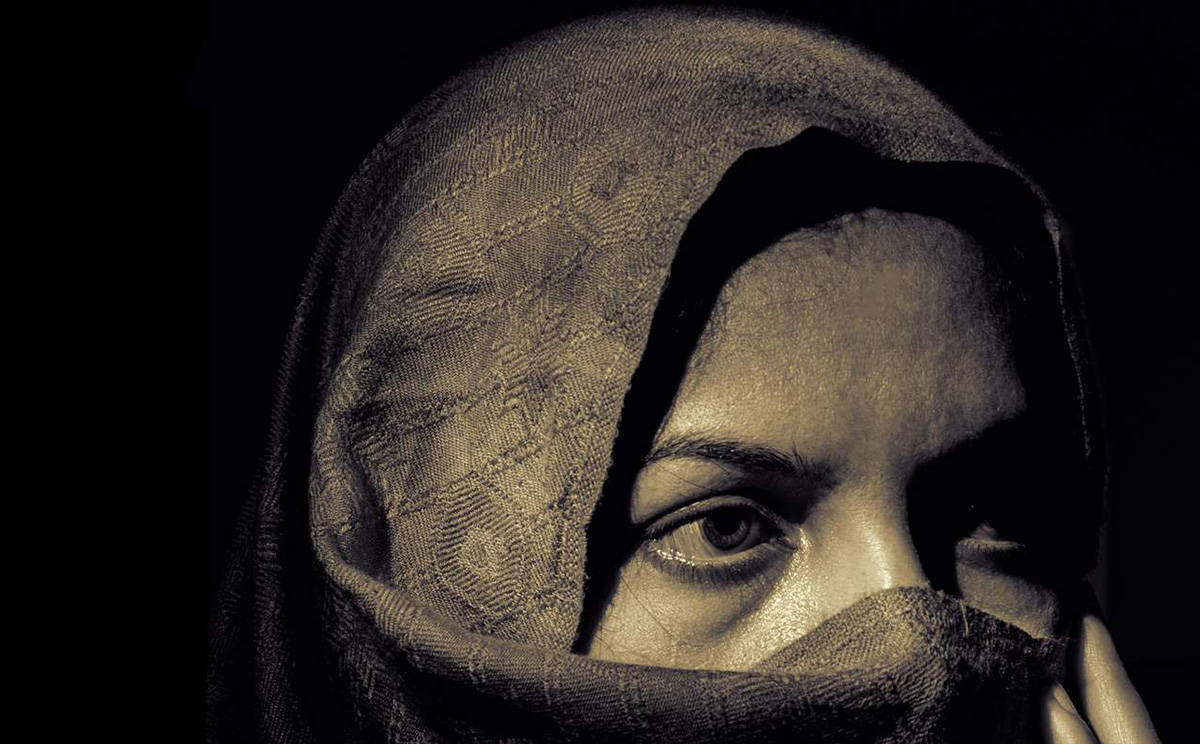 |
More recently, the brutality inflicted by ISIS terrorists on women, especially those who were non-Muslims, had the entire world scandalised. ISIS was already notorious for its savagery, but its treatment of Yazidis marked a new height of bloodshed and cruelty. Men and older women were massacred, while younger women were held in captivity for auction.
ISIS had established an elaborate system of sexual slavery, believing that the sexual assault of non-Muslims was a form of worship. Citing the Quranic verses, the Islamic State codified sex slavery in conquered regions of Iraq and Syria and used the practice to draw fresh blood. They set up markets in several towns where girls as young as nine were put up for auction to terrorists, with owners often trading women again online.
As a damning report published in The New York Times said the ISIS had “enshrined” the “theology of rape”. The Yazidi women who were later rescued from the ISIS captivity provided a shocking window into the depraved practices of the terror group. The conquered women were thrashed and raped before being sold off in slave markets where they were bought by other terrorists and subjected to the same treatment all over again. Those who did not cave into the demands of their captors were subjected to unspeakable torture and atrocities. According to one account, a woman was burned alive for refusing to submit to a particularly extreme sex act.
Similarly, another Islamist organisation, The Taliban, whose parochial views about women’s role in society converge with that of ISIS, have perpetuated violence and gender discrimination against women during their reign in Afghanistan from 1996 to 2001.
The fundamentalist group ruled the country for five years until the 2001 US-led invasion led to their downfall. During that time, it imposed a veil on women, proscribed girls an education and women the right to work, and refused even to let them travel outside their homes without a male escort to accompany them. The Taliban also carried out public executions, chopped off the hands of thieves and stoned women accused of adultery.
With the return of the Taliban to power in Afghanistan, there is palpable anxiety among the Afghan women, who are worried that the 20 years of gain made by them would be undone with the terror outfit at the helm of affairs in the country. Although the Taliban has assured a more moderate outlook and promised to uphold women’s rights in accordance with the Islamic Sharia, few believe that the fundamentalist group will honour its promise. As such, there have been reports already in the media that say the Talibani terrorists are already inflicting brutality against women who failed to conform to the group’s edicts.
Verses from Holy Quran and Hadiths quoted to justify secondary status of women in an Islamic society
Since Islamists argue that their scriptures are timeless and immutable, the relegation of women to lower status within the society has remained a perpetual constant throughout the 1,400 years of their history. And this discrimination against women is justified in the 21st century by prominent Islamic preachers such as Dr Zakir Naik, hailed by many Islamists as one of the most reliable authorities on Islamic teachings and the Holy Quran.
 Dr Zakir Naik |
Naik has uploaded several videos citing various verses from the Holy Quran and Islamic Hadiths to justify discrimination meted out on women. In a video uploaded in 2017, Naik said women don’t possess absolute rights to work at the place of their choice as per the Islamic Sharia Law. In another video, Naik was seen rationalising the Islamic jurisprudence that allows women half the share of inheritance available to men if they inherit from the same father. For example, where the decedent has both male and female children, a son’s share is double that of a daughter’s.
Similarly, in yet another video uploaded, the controversial hate preacher justified that the Islamic Sharia Law considering the testimony of a woman as half of that of a man. In other words, the weight of two female witnesses is equated to the weight of a single male witness, which effectively means that women are not considered “wise enough” or “intelligent enough” or as compared to men to have equal standing in terms of testimony.
There were even verses from the Holy Quran quoted by Dr Zakir Naik to justify domestic violence and the right of a husband to beat his wife. Zakir Naik explained the rules governing the disciplining of a disobedient wife. “When your wife does not listen to you, you should warn her. If yet, she does not follow your instruction, you should refuse to share a bed with her. And if she still does not listen to you, you should beat her, though it should be symbolic beating,” Naik said while defending wife bashing as ordained under the Islamic Sharia.
 Support Us
Support Us
Satyagraha was born from the heart of our land, with an undying aim to unveil the true essence of Bharat. It seeks to illuminate the hidden tales of our valiant freedom fighters and the rich chronicles that haven't yet sung their complete melody in the mainstream.
While platforms like NDTV and 'The Wire' effortlessly garner funds under the banner of safeguarding democracy, we at Satyagraha walk a different path. Our strength and resonance come from you. In this journey to weave a stronger Bharat, every little contribution amplifies our voice. Let's come together, contribute as you can, and champion the true spirit of our nation.
 |  |  |
| ICICI Bank of Satyaagrah | Razorpay Bank of Satyaagrah | PayPal Bank of Satyaagrah - For International Payments |
If all above doesn't work, then try the LINK below:
Please share the article on other platforms
DISCLAIMER: The author is solely responsible for the views expressed in this article. The author carries the responsibility for citing and/or licensing of images utilized within the text. The website also frequently uses non-commercial images for representational purposes only in line with the article. We are not responsible for the authenticity of such images. If some images have a copyright issue, we request the person/entity to contact us at This email address is being protected from spambots. You need JavaScript enabled to view it. and we will take the necessary actions to resolve the issue.
Related Articles
- Why Hindu-Sikh genocide of Mirpur in 1947 ignored? Why inhuman crimes of Radical Islamists always hidden in India?
- Moplah Genocide of the Malabar Hindus, 1921: Thousands of Hindus slaughtered
- The Islamic Doctrine of Permanent War: Jihãd and Religious Riot
- Tipu Sultan remembered as killer of Brahmins and demolisher of temples in many villages of Tamil Nadu: a freedom fighter or Islamic bigot?
- The ‘Sanghi propaganda’ trope on abduction and conversion of Sikh girls to Islam. Here is how this online tirade is an omen of impending danger
- Supreme Court dismisses plea seeking protection of Hindus from the Muslim community in Mewat
- Jihad Recruitment going on in Madrassas forced the Assam government to cease hundreds of them
- Violence Against Minority Hindus in Bangladesh: The Mistier World Of Silence
- Dhimmitude is nothing but a Stockholm Syndrome
- Prophecies of Jogendra Nath Mandal getting real after seventy years of his return from Pakistan
- In yet another horrific incident of grooming jihad Mohammad Yasin, a supplier of ayurvedic medicine killed his second wife ‘Zara’ earlier a Hindu girl 'Shiva Vishwakarma': Left their three-year-old girl child outside the house
- What is the reality of the Sufis: In Their Own Words
- While Hindus are at rest, one peaceful community is working overtime under the sentiments of Land Jihad to bring Indian Railways under Waqf Board
- 23 Jan to 29 Jan - 2022 - Hindus under attack: Bulletin roundup of persecution, discrimination, and hate crimes against Hindus
- Islamists are raging Land Jihad by encroaching iconic Maharashtra forts through illegal constructions within the premises, falsifying history by inventing fictional characters



























